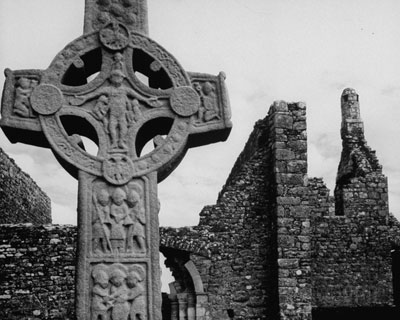One of my friends with a major paranormal interest, Mr. John Easter, submitted this for inclusion on my site here. The following is his text.
The popular holiday of Halloween has its roots and origin in the Celtic holiday of Samhain. It is truly fascinating that how Halloween and many other ancient Indo-European festivities, have been preserved untouched in Mazda-Yasna or Zoroastrianism with the original ancient beliefs behind them.”
“The Gaels, like the Zoroastrians believed that the border between this world and the Other-World became thin before the New Year; it thus allowed the spirits to reach back through the veil that separated them from the living.”
-Celtic Origins of Halloween and Zoroastrian Beliefs and Festivities by Herbad Ardeshir Farahmand
Some near death experience reports describe Hell as being in an Earthbound state as a ghost. There are exceptions, such as in ancestor veneration, but many of the ghosts and other undead beings that are recorded in folklore from all over the world are usually described as hostile or sad as well as being in an unnatural or even Hellish like state.
“But what if one level of hell existed right here on the surface- unseen and unsuspected by the living people occupying the same space? What if it meant remaining on earth but never again able to make contact with it?”
-Visions of God: From the Near Death Experience p. 131 by Dr. Ken R. Vincent
Taken from Return from Tomorrow by George Ritchie and Elizabeth Sherrill
“The psychiatrist George Richie (1998, pp.37-41) who had an NDE(near death experience) in 1943 tells of visiting hellish realms invisible but on the earth-plane, as well as tours of other realms where people were trapped because of their own desires.”
-Scientific Investigation of the “Dark Side” by Dr. Ken R. Vincent
Gathic Avestan “Druj” means malicious falsehood, the opposite of “Asha” or goodness, and the essence of evil in the wickedest, vilest, deepest, and un-holiest sense. It is a close cognate of Vedic Sanskrit “Druh” which means affliction, hurtful, hostile, injurer, foe, fiend, demon, and evil power. “Druh” is also the opposite of “Rta” which is the Vedic Sanskrit cognate of Gathic Avestan “Asha” and means order.
Old Norse “Draugar” and Middle Irish “Aurddrach” refer to undead beings and are related cognates of Gathic Avestan “Druj” and Vedic Sanskrit “Druh” through Indo-European roots. Other related words include Old English “Dreag”, meaning ghost, Scottish Gaelic “Dreag”, meaning ghost lights or “fiery death-warnings”, Old Persian “Drauga” and Persian “Dorug”, meaning lies, German “Trug”, meaning fraud or deception, and English “Trick”. Possibly even English “Darkness”, which derives from Old English “Deorc” meaning obscure, gloomy, sad, cheerless, sinister, and wicked.
“Aurddrach” means ghost. “Abhartach” is a similar word that refers to an undead dwarf in an Irish legend who is described as one of the “neamh-mairbh” or walking dead. “Draug”, singular, or “Draugar”, plural, are ghoul like beings described in the Norse/Icelandic sagas. Including Eyrbyggja Saga, Saga of Grettir the Strong, Saga of Erik the Red, Saga of King Hrolf Kraki, Saga of Egil & Asmund, Saga of Hromund Gripsson, Njal’s Saga, Laxdaela Saga, Gisli Sursson’s Saga, and Floamanna Saga.

Draugar are related to ghasts in Swedish lore, Nachzehrers in German lore, and revenants in English lore. Draugar are particularly similar to the vampires in Slavic & Romanian lore and to both the Rakshasas and the undead beings in Hinduism & Indian lore. They are also similar to the ghouls in Arabian lore and to the Dybbuks in Jewish lore. Whether described as physical ghoul like beings or non-physical ghost like beings the undead are mentioned in the lore of numerous countries and cultures and on every continent.
Draugar were thought to be very greedy, cruel, and wicked people in life. As undead they injure and terrorize both human and animal life in the Norse sagas. This does seem to be connected to the Dregavants, the followers of Druj and the living injurers of human and animal life, who fall back into the House of Druj after their deaths, which is described as a Hellish state for their souls in the Gathas. Frawardin Yasht 12 states that the guardian angels help prevent Druj from gaining power over the physical world or corporeal life.
“In Norse mythology the bridge/or link to the Aesir’s realm is inaccessible to the wicked and is only open to the noble souls. Also, in the Zoroastrian holy writings the vile because of their own actions (destroying the world of men/mortals) and lack of vision are unable to cross over the bridge and are cast back into the domain of lies that have consumed them through all ages. (Yasna 46.11 and Yasna 51.13)”
-The Concept of the Illuminating Bridge in Zoroastrian Faith, Norse Mythology and the Al-Sirat in Islam by Herbad Ardeshir Farahmand

